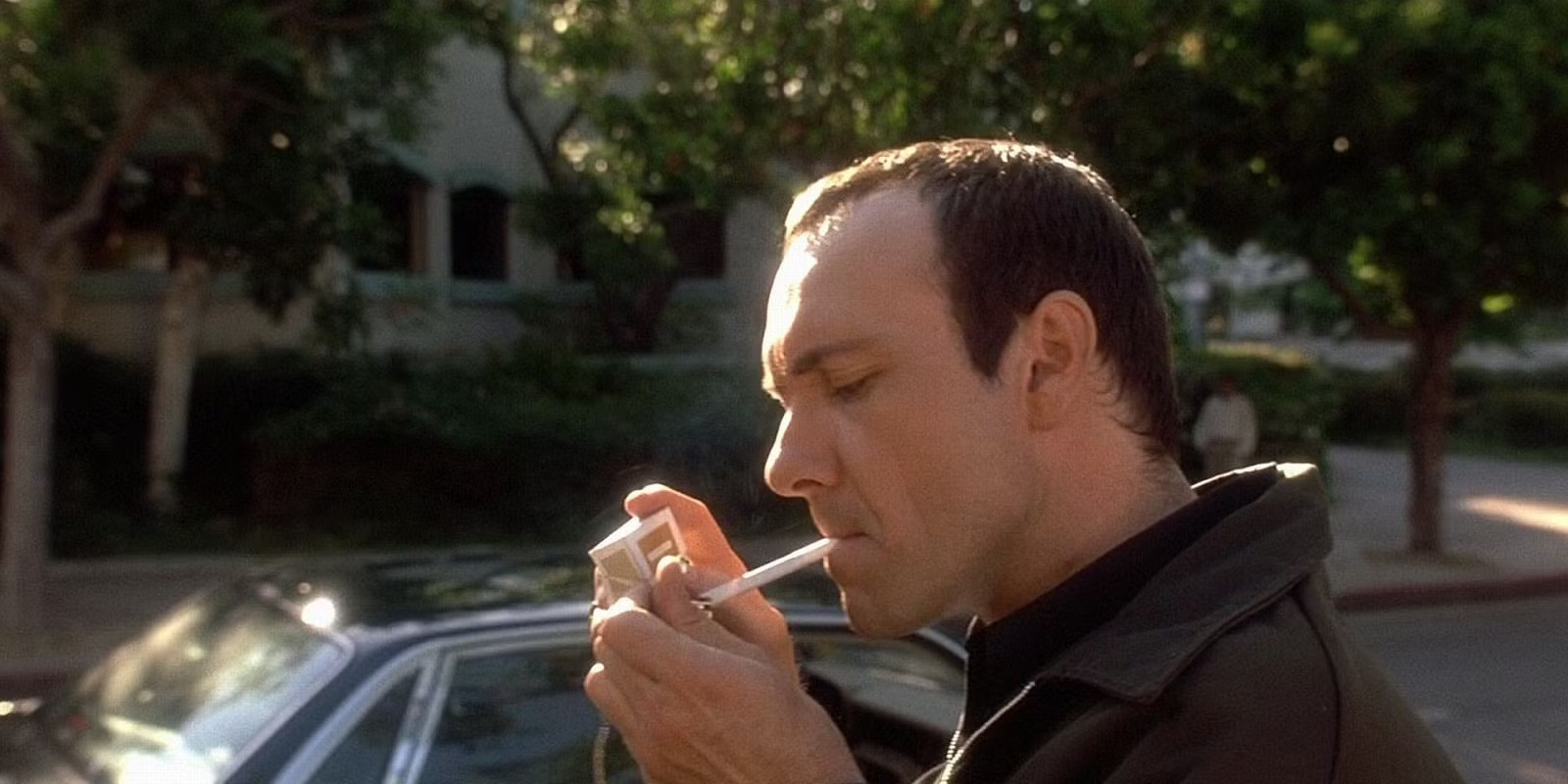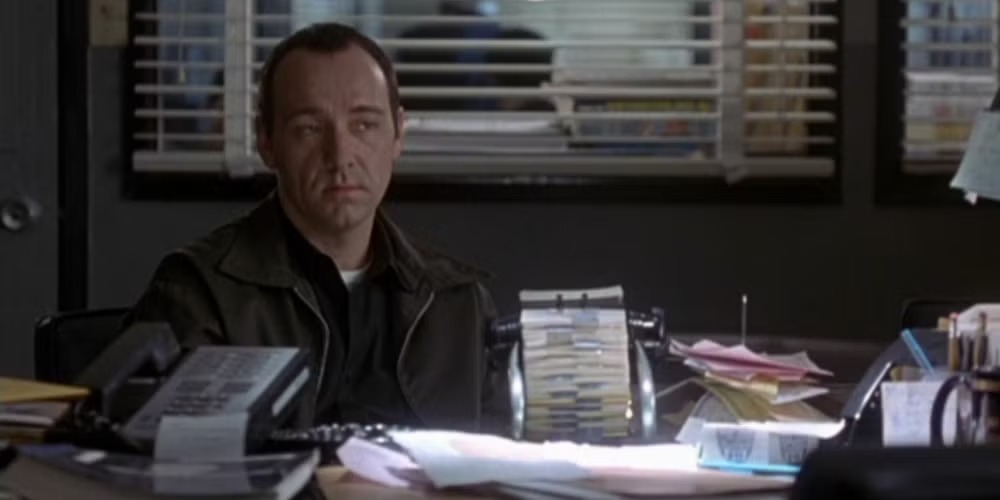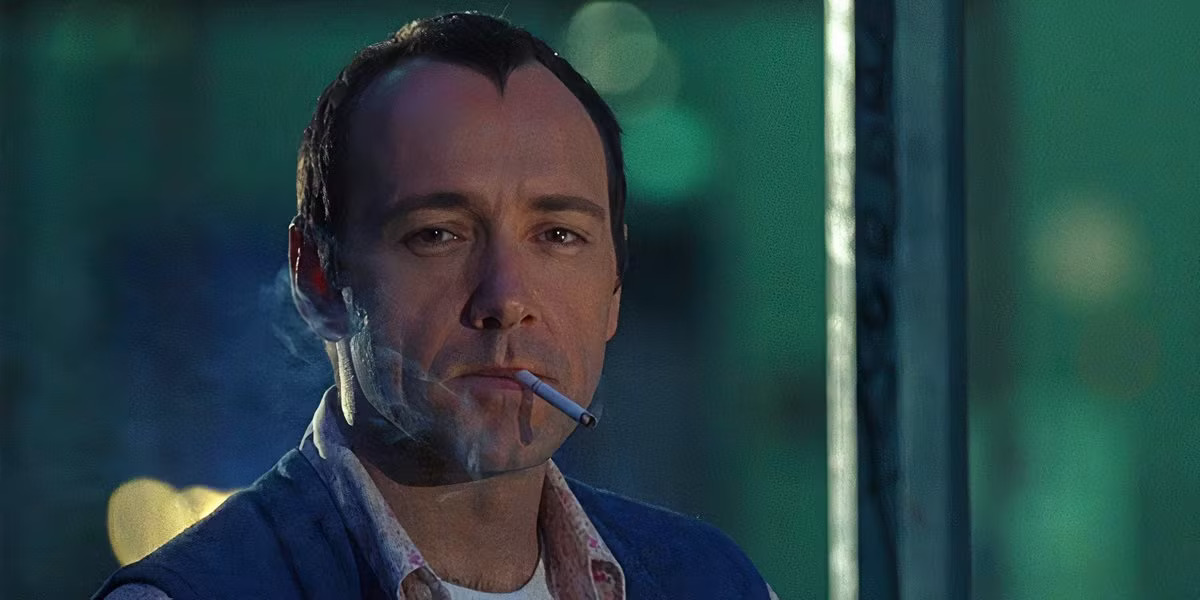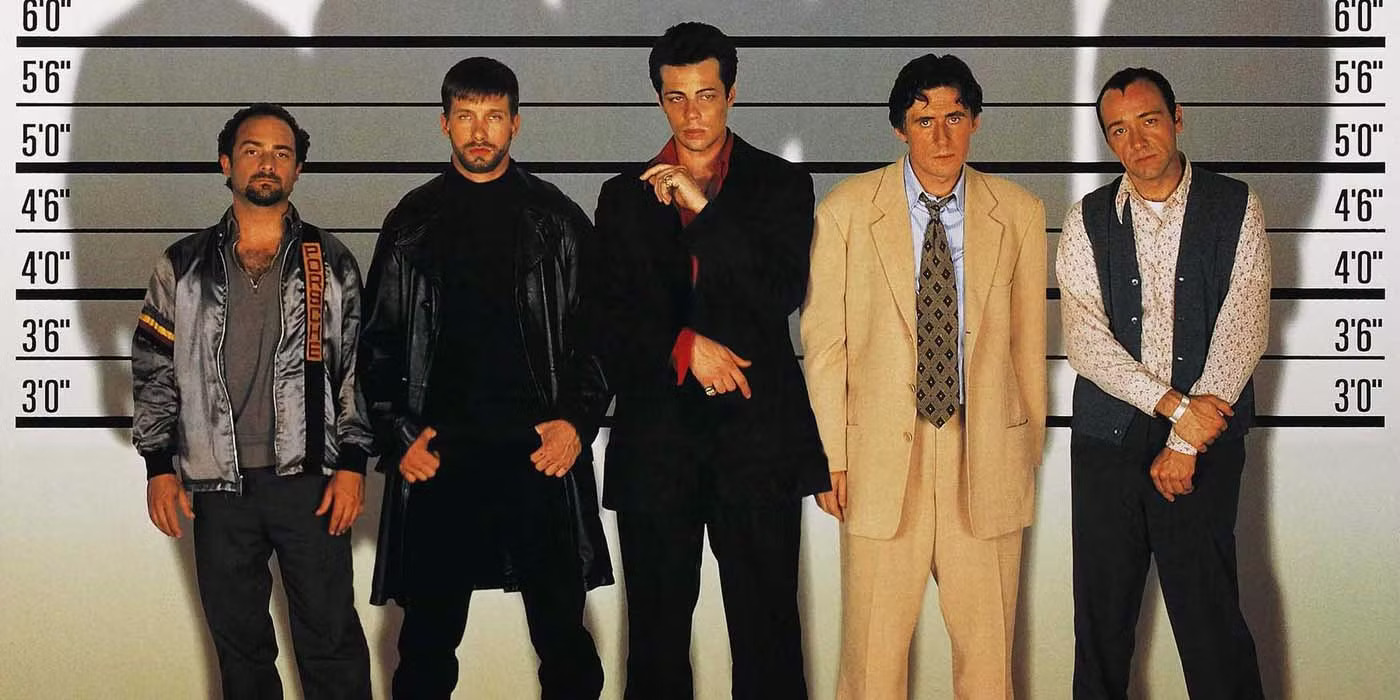The Usual Suspects (1995) is regarded as one of the greatest crime thrillers in cinema history, mainly due to its legendary twist ending. The film follows a group of criminals coerced into working together on a job that ultimately leads to their demise. As the sole survivor, Roger “Verbal” Kint (Kevin Spacey) recounts the story to U.S. Customs Agent Dave Kujan (Chazz Palminteri), spinning a tale full of deception. The final revelation turns everything on its head, leaving audiences stunned and cementing the movie’s legacy.
The film opens with a massacre on a docked ship, where nearly everyone has been killed. The only survivors are Verbal Kint and a severely burned Hungarian man. Verbal, a small-time con artist with a physical disability, is taken into custody and interrogated by Agent Kujan. The Hungarian survivor, though unable to speak clearly, utters one name—Keyser Söze, a mythical and terrifying figure in the criminal underworld.
Through Verbal’s narrative, we learn that five criminals—Dean Keaton (Gabriel Byrne), Michael McManus (Stephen Baldwin), Fred Fenster (Benicio del Toro), Todd Hockney (Kevin Pollak), and Verbal himself—were assembled by a mysterious figure known as Kobayashi (Pete Postlethwaite). They were blackmailed into performing a job on behalf of Söze, a shadowy crime lord whose identity is unknown. The job was supposed to be a heist to destroy $91 million worth of cocaine on a ship, but things quickly spiraled out of control.

The Moment of Realization That Exposes Verbal Kint’s True Identity as Keyser Söze
According to Verbal, the crew was sent to the ship expecting to find and destroy the drugs. However, there were no drugs—only an ambush. One by one, the criminals were taken out by a phantom-like killer, whom Verbal claims was Keyser Söze himself. The only person left alive was Keaton, who was then executed in cold blood.
At the end of his story, Verbal appears broken and exhausted. Kujan, convinced he has solved the case, concludes that Keaton was actually Keyser Söze all along and had staged the entire operation. Verbal reluctantly agrees before being allowed to leave, seemingly confirming Kujan’s theory.
As Verbal exits, Kujan takes a moment to process everything he has heard. His eyes wander across the office, landing on a cluttered bulletin board filled with newspaper clippings, wanted posters, and other details. Slowly, he realizes that many of the names and events Verbal described were pulled directly from the objects in the room.
Kujan’s confidence crumbles as the horrifying truth dawns on him—Verbal fabricated the entire story. He rushes out to stop him, but it is too late. Outside, Verbal, who had been limping the entire time, suddenly straightens up, his disability disappearing. With a calm demeanor, he lights a cigarette with a gold lighter—previously seen in the hands of Keyser Söze—and gets into a waiting car driven by Kobayashi. By the time Kujan can react, Verbal has vanished.
Meanwhile, a police officer receives a fax of a suspect sketch provided by the Hungarian survivor. The drawing is a near-perfect match for Verbal Kint. At that moment, it becomes clear—Verbal is Keyser Söze.

Keyser Söze: The Perfect Illusion
The reveal that Verbal Kint is actually Keyser Söze redefines the entire film. Throughout the movie, Söze was described as an almost mythical figure—so elusive that many questioned whether he even existed. The legend states that Söze once slaughtered his own family to prevent his enemies from using them against him, then killed the perpetrators and disappeared, leaving behind only fear and rumors.
Verbal’s masterstroke was making himself seem weak, harmless, and unimportant. By manipulating Kujan into believing Keaton was Söze, he ensured that no one would suspect him. The movie repeatedly emphasized that Söze was a master of deception, and in the end, he proved it by fooling everyone, including the audience.
The true reason for the ship massacre was not about drugs but about secrecy. The ship carried a man who had seen Söze’s face—a threat he could not allow to live. Every person involved in the job was expendable; Söze orchestrated the entire heist to eliminate the witness while ensuring that no one left alive could connect him to the crime.
Though Söze succeeded in eliminating almost everyone, he made one mistake—one Hungarian survivor escaped and revealed his identity to the authorities. However, by the time they put the pieces together, Söze was long gone.
The brilliance of The Usual Suspects is how it deceives both the characters and the audience. Throughout the film, viewers believe they are watching a straightforward mystery unravel. But when the truth is revealed, they are left questioning everything. The film cleverly plants clues that, upon rewatching, make the ending even more satisfying.
Moreover, the story suggests that Söze might not be a single person but rather an idea—a name used to strike fear into enemies. By maintaining his anonymity, Söze ensures that he remains untouchable.

A Masterful Deception That Redefined the Art of the Twist in Cinema
Twist endings in movies can be risky, as they can make audiences feel tricked. However, The Usual Suspects succeeds because the rest of the film is so strong that the reveal enhances the experience rather than undermines it. The twist is not just shocking but logical—it rewards attentive viewers who pick up on subtle hints throughout the film.
Had the film ended with Kujan believing Keaton was Söze, it would still have been a solid crime thriller. But the final revelation elevates it to a masterpiece, leaving audiences stunned by how easily they were fooled.
While The Usual Suspects is now hailed as a classic, its reception was not universally positive. Some critics, like Roger Ebert, felt that the twist made the film meaningless, arguing that a story built on lies lacks emotional weight. Others felt the deception was too manipulative, making the film feel like an elaborate trick rather than a compelling narrative.
However, many critics praised the film for its intricate storytelling, with Kevin Spacey’s performance earning him an Academy Award for Best Supporting Actor. Today, the movie is celebrated as one of the best crime thrillers of all time, with its ending serving as a benchmark for storytelling excellence.
The Usual Suspects is not just about criminals or heists—it is a story about deception, manipulation, and the power of legend. The film’s ending forces audiences to reconsider everything they have just seen, proving that perception is everything. By crafting one of the most unforgettable twists in movie history, The Usual Suspects ensures that Keyser Söze remains as mysterious and feared as ever.
As the movie famously states, “The greatest trick the devil ever pulled was convincing the world he didn’t exist.” And like that—he’s gone.



